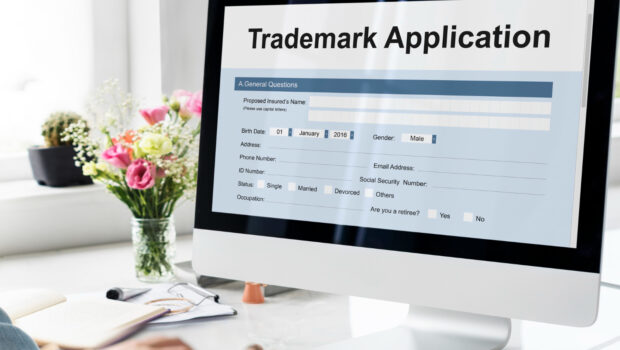Trademark Registration in the US: A Guide For Owners
In the ever-evolving digital marketplace, the importance of protecting your brand cannot be overstated. For professionals in e-commerce, web development, and web design, securing a trademark is a critical step in safeguarding your intellectual property. This article provides a detailed guide on the US trademark registration, focusing on the rules and processes involved in filing a trademark application.
Understanding Trademarks
A trademark is a symbol, word, or phrase legally registered or established by use as representing a company or product. Trademarks distinguish your goods or services from those of others and are crucial in building brand recognition and loyalty.
Types of Trademarks
- Word Marks: These include letters, numbers, or a combination of both that form a distinctive word or phrase.
- Design Marks: These are logos or other graphical symbols.
- Composite Marks: A combination of words and design elements.
- Service Marks: Similar to trademarks but specifically for services rather than goods.
Importance of Trademark Registration
For e-commerce, web development, and web design professionals, a registered trademark offers numerous benefits:
- Exclusive Rights: It grants you exclusive rights to use the mark in connection with your goods or services.
- Legal Protection: It provides legal backing to prevent others from using a similar mark that could cause confusion.
- Brand Value: It enhances the value of your brand and can be a significant asset.
- Customer Trust: It builds customer trust and loyalty by signifying consistent quality and origin of goods or services.
Trademark Registration Process in the US
Registering a trademark in the US involves several steps, from initial research to filing the application and maintaining the registration.
1. Conduct a Trademark Search
Before filing for a trademark, it’s essential to conduct a thorough search to ensure your mark is unique and not already in use. This involves:
- Searching the USPTO Database: The United States Patent and Trademark Office (USPTO) provides a searchable database known as the Trademark Electronic Search System (TESS).
- Checking Common Law Trademarks: Beyond the USPTO, check for trademarks that may not be registered but are in use locally or regionally.
2. Determine the Basis for Filing
The basis for filing a trademark application can be:
- Use in Commerce: If you are already using the mark in commerce.
- Intent to Use: If you plan to use the mark in the future but haven’t yet started.
3. Prepare and File the Application
Filing a trademark application involves several critical elements:
Applicant Information
- Name: The full legal name of the individual or entity applying.
- Address: The address where correspondence will be sent.
- Type of Entity: Whether the applicant is an individual, corporation, partnership, etc.
Mark Information
- Representation of the Mark: A clear image or description of the mark.
- Description of the Mark: A detailed written description of the mark if it includes design elements.
Goods and Services
- Identification of Goods/Services: A specific and accurate description of the goods or services associated with the mark. This must conform to the USPTO’s Acceptable Identification of Goods and Services Manual.
Filing Basis
- Basis for Filing: As mentioned earlier, whether the application is based on use in commerce or intent to use.
Specimen
- Proof of Use: If filing based on use in commerce, provide a specimen showing the mark as used in the marketplace.
4. Pay the Filing Fee
The filing fee varies depending on the type of application and the number of classes of goods or services. The TEAS Plus application is more cost-effective but requires stricter adherence to USPTO requirements.
5. Review by USPTO
Once the application is submitted, it undergoes a review process:
- Examination: An examining attorney reviews the application to ensure it meets all legal requirements.
- Office Actions: If there are any issues, the USPTO will issue an Office Action, and you will have six months to respond.
- Publication: If approved, the mark is published in the USPTO’s Official Gazette for opposition.
6. Opposition Period
During the 30-day opposition period, third parties can oppose the registration if they believe it will harm their existing trademark rights.
7. Registration
If there are no oppositions, or if oppositions are resolved in your favor, the USPTO will issue a Certificate of Registration for marks filed based on use in commerce. For intent-to-use applications, you must first file a Statement of Use or an Amendment to Allege Use before receiving the certificate.
Maintaining Your Trademark
Once registered, it is crucial to maintain your trademark:
- Renewals: Trademarks must be renewed every ten years.
- Continued Use: Between the fifth and sixth year after registration, you must file a Declaration of Use.
- Monitoring: Continuously monitor the marketplace and enforce your rights to prevent unauthorized use of your trademark.
Common Pitfalls and Tips for Success
Common Mistakes
- Insufficient Research: Failing to conduct a thorough search can lead to rejection or legal disputes.
- Incorrect Classification: Misclassifying your goods or services can complicate the application process.
- Inadequate Specimens: Providing incorrect or inadequate specimens can delay or derail your application.
Tips for a Smooth Process
- Professional Assistance: Consider hiring a trademark attorney to navigate the complexities of the process.
- Clear Documentation: Ensure all documentation is clear, accurate, and complete.
- Stay Informed: Keep up-to-date with USPTO guidelines and updates.
Conclusion
Trademark registration is a vital step for e-commerce, web development, and web design professionals looking to protect their brand. By understanding the detailed process and adhering to the rules of filing a trademark application, you can secure the exclusive rights to your brand, enhance its value, and build lasting customer trust. Taking the time to properly register and maintain your trademark ensures your brand’s integrity and distinguishes your products and services in a competitive market.
Cover Image: Freepik












